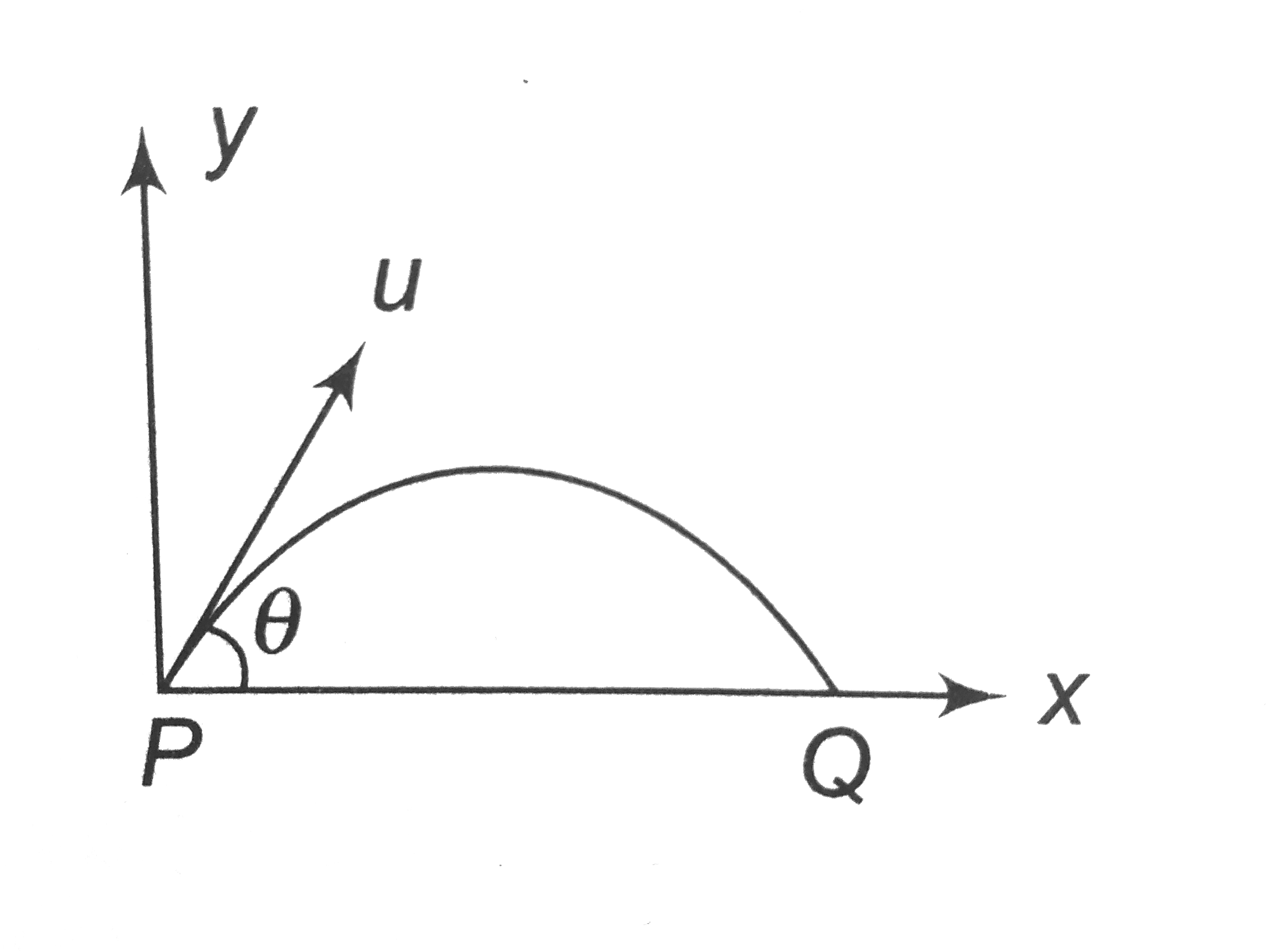A stone is projected with speed u and angle of projection is θ. Find radius of curvature at t=0.
u2cos2θg
u2gsinθ
u2gcosθ
u2sin2θg
The correct Answer is:C
To find the radius of curvature at t=0 for a stone projected with speed u at an angle θ, we can follow these steps:
Step 1: Identify the components of the initial velocity
When the stone is projected, its initial velocity u can be resolved into two components:
- Horizontal component: ux=ucosθ
- Vertical component: uy=usinθ
Step 2: Determine the acceleration acting on the stone
The only acceleration acting on the stone after it is projected is the acceleration due to gravity, which acts downward. This acceleration can be denoted as:
- g (downward)
Step 3: Understand the concept of radius of curvature
The radius of curvature R at any point in a projectile motion can be calculated using the formula for centripetal acceleration:
ac=v2R
Where:
- ac is the centripetal acceleration,
- v is the tangential velocity at that point,
- R is the radius of curvature.
Step 4: Calculate the centripetal acceleration at t=0
At t=0, the velocity of the stone is the initial velocity u. The centripetal acceleration can be expressed as the component of gravitational acceleration that acts perpendicular to the velocity. The component of gravitational acceleration acting perpendicular to the velocity is given by:
ac=gcosθ
Step 5: Substitute values into the radius of curvature formula
Now, substituting the values into the centripetal acceleration formula:
gcosθ=u2R
Rearranging this equation to solve for R:
R=u2gcosθ
Conclusion
Thus, the radius of curvature at t=0 is given by:
R=u2gcosθ
When the stone is projected, its initial velocity u can be resolved into two components:
- Horizontal component: ux=ucosθ
- Vertical component: uy=usinθ
The only acceleration acting on the stone after it is projected is the acceleration due to gravity, which acts downward. This acceleration can be denoted as:
- g (downward)
The radius of curvature R at any point in a projectile motion can be calculated using the formula for centripetal acceleration:
ac=v2R
Where:
- ac is the centripetal acceleration,
- v is the tangential velocity at that point,
- R is the radius of curvature.
At t=0, the velocity of the stone is the initial velocity u. The centripetal acceleration can be expressed as the component of gravitational acceleration that acts perpendicular to the velocity. The component of gravitational acceleration acting perpendicular to the velocity is given by:
ac=gcosθ
Now, substituting the values into the centripetal acceleration formula:
gcosθ=u2R
Rearranging this equation to solve for R:
R=u2gcosθ
Thus, the radius of curvature at t=0 is given by:
R=u2gcosθ
Topper's Solved these Questions
Similar Questions
A particle is projected with speed u at angle θ to the horizontal. Find the radius of curvature at highest point of its trajectory
View SolutionA particle is projected with a speed u at an angle θ to the horizontal. Find the radius of curvature.
At the point where the particle is at a highest half of the maximum height H attained by it.
View SolutionA body is projected with a certain speed at angles of projection of θ and 90−θ The maximum height attained in the two cases are 20m and 10m respectively. The range for angle of projection θ is
View SolutionA particle of mass m is projected with speed u at an angle θ with the horizontal. Find the torque of the weight of the particle about the point of projection when the particle is at the highest point.
View SolutionA particle of mass m is projected with speed u at an angle θ with the horizontal. Find the torque of the weight of the particle about the point of projection when the particle is at the highest point.
View SolutionA body is projected with velocity u at an angle of projection θ with the horizontal. The direction of velocity of the body makes angle 30∘ with the horizontal at t=2s and then after 1s it reaches the maximum height. Then
View SolutionA stone is thrown with a speed of 10ms−1 at an angle of projection 60∘. Find its height above the point of projection when it is at a horizontal distance of 3m from the thrower ? (Take g=10ms−2)
View SolutionA stone is thrown with a speed of 10ms−1 at an angle of projection 60∘. Find its height above the point of projection when it is at a horizontal distance of 3m from the thrower ? (Take g=10ms−2)
View SolutionA particle is projected with a velocity ¯v=aˆi+bˆj . Find the radius of curvature of the trajectory of the particle at (i) point of projection (ii) highest point .
View SolutionAverage torque on a projectile of mass m (initial speed u and angle of projection θ) between initial and final positions P and Q as shown in figure, about the point of projection is :
 .
.
View Solution
